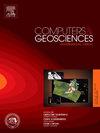Processing pipeline for fully-automated computation of 3D glacier surface flow time series
IF 4.4
2区 地球科学
Q1 COMPUTER SCIENCE, INTERDISCIPLINARY APPLICATIONS
引用次数: 0
Abstract
To comprehend glacier dynamics for a region, a time-series study of glacier change is essential. Most of the existing research focus on understanding the long-term changes in glaciers to understand how glaciers adapt to a warming climate. However, generation of a large time series data often requires a substantial amount of computational time and resources, and no automated pipelines exist for calculating glacier surface flow. We address these problems by building an automated pipeline for efficient processing of satellite SAR images, generating extensive time series data for tracking glacier changes. This pipeline employs Sentinel-1 (S-1) interferometric wide swath SAR data to produce seasonal time series of glacier surface displacements over prolonged durations. The pipeline utilizes the ISCE framework for SAR data processing, and introduces a robust offset tracking module designed to perform offset tracking across an image time-series through Normalized cross correlation (NCC) stacking. It performs offset tracking on both ascending and descending S-1 images to compute displacements in both azimuth and range directions. These displacements are later utilized to compute northward, eastward, and vertical surface displacements between consecutive time-steps through weighted least squares, with optimal weights designed to make the model more robust. We demonstrate the proposed pipeline over three valley-type glaciers (Bara Shigri, Geepang Gath, and Samudra Tapu) located in the Chandra basin, Himachal Pradesh, India, generating 3D surface displacement time series from 2017 to 2022. The software, automating the entire process of glacier surface displacement time-series computation, is open access, and can be employed to monitor varieties of glaciers using current and upcoming SAR sensors with frequent revisits.
三维冰川地表流动时间序列全自动计算处理流水线
为了了解一个地区的冰川动态,冰川变化的时间序列研究是必不可少的。现有的研究大多侧重于了解冰川的长期变化,以了解冰川如何适应变暖的气候。然而,大量时间序列数据的生成往往需要大量的计算时间和资源,并且没有用于计算冰川表面流量的自动化管道。为了解决这些问题,我们建立了一个自动化的管道,用于有效处理卫星SAR图像,生成大量的时间序列数据,用于跟踪冰川变化。该管道采用Sentinel-1 (S-1)干涉宽幅SAR数据来产生长时间冰川表面位移的季节性时间序列。该管道利用ISCE框架进行SAR数据处理,并引入了一个鲁棒的偏移跟踪模块,旨在通过归一化互相关(NCC)叠加在图像时间序列上执行偏移跟踪。它对上升和下降的S-1图像进行偏移跟踪,以计算方位角和距离方向上的位移。这些位移随后通过加权最小二乘法计算连续时间步之间向北、向东和垂直的地表位移,并设计最优权重以使模型更具鲁棒性。我们在印度喜马偕尔邦钱德拉盆地的三个山谷型冰川(Bara Shigri, Geepang Gath和Samudra Tapu)上展示了拟议的管道,生成了2017年至2022年的3D地表位移时间序列。该软件自动化了冰川表面位移时间序列计算的整个过程,是开放获取的,可以使用当前和即将使用的SAR传感器频繁访问来监测各种冰川。
本文章由计算机程序翻译,如有差异,请以英文原文为准。
求助全文
约1分钟内获得全文
求助全文
来源期刊

Computers & Geosciences
地学-地球科学综合
CiteScore
9.30
自引率
6.80%
发文量
164
审稿时长
3.4 months
期刊介绍:
Computers & Geosciences publishes high impact, original research at the interface between Computer Sciences and Geosciences. Publications should apply modern computer science paradigms, whether computational or informatics-based, to address problems in the geosciences.
 求助内容:
求助内容: 应助结果提醒方式:
应助结果提醒方式:


